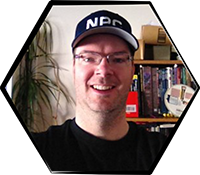Name something memorable from a setting your played or GM'd.
For example, the default setting in Blades of the Dark is the soot & swords city of Duskvol.
One cool unique feature about it is the dozens of micro thieves' guilds it has. These are called Crews. Crews have a reputation (based on capability) and heat (how wanted they are by authorities). Crews also get unique Boons.
This world feature makes for awesome faction play.
For example, the default setting in Blades of the Dark is the soot & swords city of Duskvol.
One cool unique feature about it is the dozens of micro thieves' guilds it has. These are called Crews. Crews have a reputation (based on capability) and heat (how wanted they are by authorities). Crews also get unique Boons.
This world feature makes for awesome faction play.


